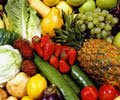By: Reader's Digest
Ten ways to make low-carb healthy.
Thanks to the popularity of low-carb diets, nearly half of Americans say they are watching the amount of carbohydrates they eat. If you're among them, we're providing these 10 tips so your carb control is healthy and wise!
Bear in mind that there is a huge difference between Cheese Doodles and oatmeal. Both might be categorized as carbs, but their benefits are on opposite ends of the health spectrum. In the last chapter, we detailed the benefits of “good carbs.” Now it's time to explain what a “bad carb” is. Here's the simplest answer: white flour, refined sugar, and white rice. More broadly, any food made primarily of a carb that has been processed in such a way as to strip out ingredients that hinder quick and easy cooking. Why are refined carbs a problem? Easy: They digest so quickly that they cause blood sugar surges that lead to weight gain and other health troubles.Here are some ways to avoid troublesome carbs while still getting the fuel you need for good health. Carb-counting meets common sense, right this way...
1. Tell the waiter to hold the bread. At almost every restaurant, your meal starts with a basket of rolls, breads, and crackers made from white flour. If it's not put on the table, you won't eat any. Or, if you really need something to nibble on, ask if they have whole wheat varieties.
2. At Chinese restaurants, ask for brown rice, and limit how much you eat to one cup. In fact, some Chinese restaurants have started offering to swap a vegetable for the rice in their combo dinners, knowing that many people are on low-carb diets. At home, always cook brown rice instead of white. Brown rice hasn't been processed and still has its high-fiber nutrients.
3. Instead of bread, use eggplant slices to make a delicious sandwich. Broil two thick slices of eggplant until brown, then add mozzarella and tomato, olive oil and basil to one slice, suggests Nicole Glassman, owner of Mindful Health in New York City. Top with the other slice of eggplant and broil again until the cheese melts.
4. Wrap your food in lettuce leaves. Yes, skip the bun, tortillas, and bread slices and instead make a sandwich inside lettuce leaves. Glassman suggests going Mexican with a sprinkle of cheddar cheese, salsa, and chicken; Asian with sesame seeds, peanuts, bean sprouts, cut up green beans, and shrimp with a touch of soy sauce; or deli style with turkey, cheese, and mustard.
5. Buy old-fashioned snacks in kidsize bags. Truth is, pretzels, tortilla chips, potato chips, and cookies are mostly bad carbs, made primarily of refined flour, sugar, salt, and/or oil. You want to remove as many of these foods from your daily eating as you can. But if you can't live without them, buy them in small bags--1 ounce is a typical “lunch box” size--and limit yourself to just one bag a day.
6. Break yourself of your old spaghetti habits. Almost everyone loves a big bowl of pasta, topped with a rich tomato sauce. The tomato sauce couldn't be better for you; the spaghetti, however, is pure carbohydrate. While spaghetti is fine to eat every now and then, for those sensitive to carbs or wishing to cut back on their noodle intake, here are some alternatives to the usual spaghetti dinner:
7. Cut up 1-ounce portions of cheese and divvy up 1-ounce portions of nuts into tiny snack bags. Now you have a handy snack at the ready.
8. Eat potatoes boiled with the skin on. The effect of potatoes on blood sugar depends on how the potatoes are prepared. No need to unspud yourself completely! Also, new potatoes tend to have fewer simple carbs than other types of potatoes.
9. Eat lightly of the new low-carb products. More than 1,000 low-carb products were introduced in 2003, but the FDA has yet to publish any guidelines as to what “low carb” really means. Instead, many new “low carb” foods are to carbcutting what “low fat” cookies were to fat-cutting: just a new way of pitching foods high in calories and low in nutrient value. In fact, Consumer Reports found that many packaged low-carb foods are actually higher in calories than their regular counterparts. For instance, a serving of Keto's low-carb Rocky Road ice cream has 270 calories, almost double the calories found in many regular ice creams and twice as much fat.
10. Think lightly of the new net-carb measurements. Many of the low-carb weight-loss programs are trying to get their followers to use “net carbs” as the measurement of choice for the appropriateness of a carb food in their diet. This is a measurement of the “bad carbs” left in a food after you adjust for those carb ingredients that don't immediately affect blood sugar. The folks at Atkins Nutritionals say the proper way to measure net carbs is to subtract fiber (as well as sugar alcohols and glycerin, when applicable) from the total carbs listed on the nutrition facts panel of a product. But that's just their version, and that's the problem. “Net carbs” is not a regulated or standardized measurement--manufacturers can define it how they want, and say what they want on product packaging. And there is no science to say that tracking net carbs offers any unique weight-loss benefit.



No comments:
Post a Comment